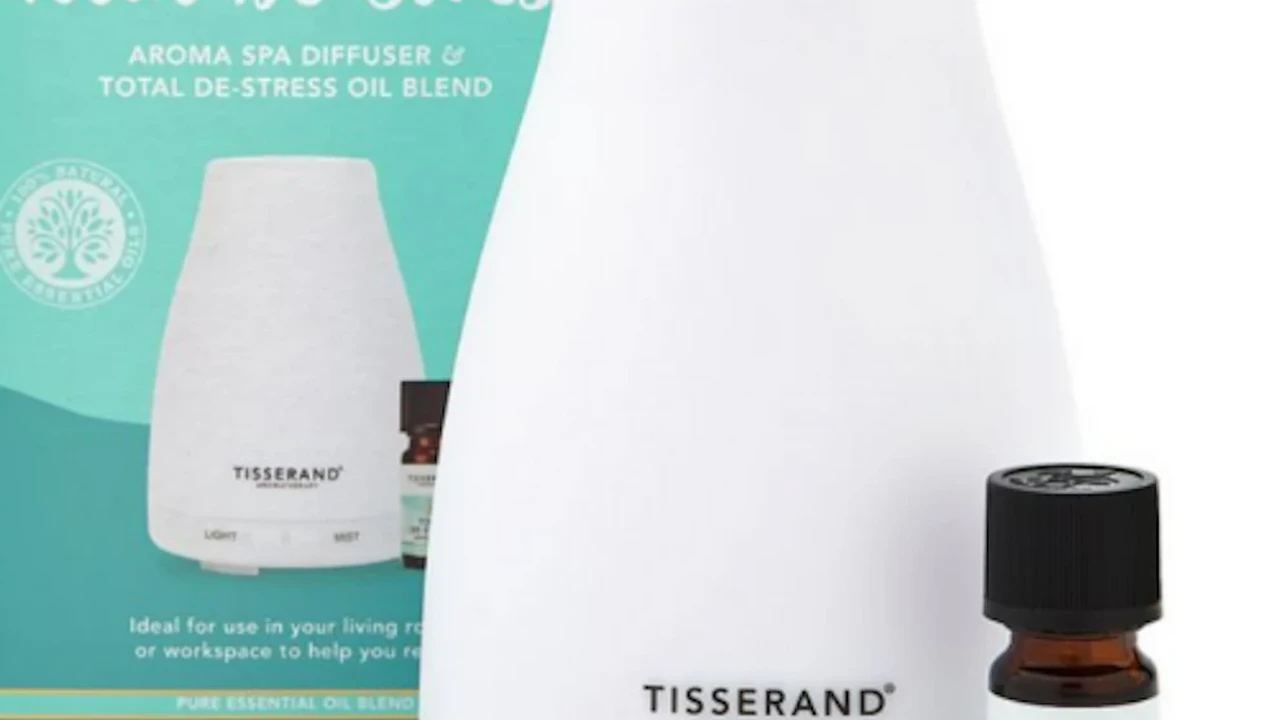Seasonal Air Quality Monitoring Devices Reviewed
Review the best seasonal air quality monitoring devices. Stay informed about your indoor and outdoor air environment.

Seasonal Air Quality Monitoring Devices Reviewed
Hey everyone! Let's talk about something super important for our health, especially as the seasons change: air quality. We spend so much time indoors, and honestly, the air inside our homes can sometimes be even more polluted than the air outside. Think about it: dust, pet dander, cleaning product fumes, cooking odors, pollen sneaking in – it all adds up. And then there's the outdoor air, which can be affected by everything from wildfires to industrial pollution, and even just seasonal allergens like pollen counts. Knowing what's in the air you're breathing is the first step to making it better. That's where air quality monitors come in. They're like little detectives for your air, giving you real-time data so you can make informed decisions, whether that's opening a window, turning on an air purifier, or even deciding to stay indoors on a high-pollution day. We're going to dive deep into some of the best seasonal air quality monitoring devices out there, comparing their features, what they measure, their accuracy, and of course, their price points. Let's get started!
Why Monitor Your Air Quality Indoor and Outdoor Air Pollutants
You might be wondering, "Do I really need an air quality monitor?" The short answer is, probably yes! Our bodies are constantly interacting with our environment, and the air we breathe directly impacts our health. Poor air quality can lead to a whole host of issues, from minor irritations like itchy eyes and sneezing to more serious long-term problems like respiratory diseases and cardiovascular issues. For those of us with allergies or asthma, monitoring air quality isn't just a good idea, it's essential for managing symptoms. And even if you don't have pre-existing conditions, understanding your air can help prevent future problems and simply make you feel better day-to-day.
Let's break down some common pollutants these devices help you track:
- PM2.5 and PM10: These are tiny particulate matter, basically microscopic bits of dust, pollen, mold spores, smoke, and pollutants from combustion. PM2.5 is particularly dangerous because it's small enough to get deep into your lungs and even enter your bloodstream.
- VOCs (Volatile Organic Compounds): These are gases emitted from certain solids or liquids. Think paints, cleaning supplies, air fresheners, furniture, and even some building materials. They can cause short-term health effects like headaches and nausea, and long-term effects like liver damage.
- Carbon Dioxide (CO2): While not directly toxic at typical indoor levels, high CO2 indicates poor ventilation, which can lead to drowsiness, reduced cognitive function, and a buildup of other pollutants.
- Formaldehyde (HCHO): A common VOC found in building materials, furniture, and household products. It's a known carcinogen and can cause respiratory irritation.
- Temperature and Humidity: While not pollutants themselves, these factors significantly influence the growth of mold and dust mites, and can affect how comfortable you feel.
- Pollen: A major seasonal allergen. Some advanced monitors can even give you an idea of pollen levels.
Understanding these measurements helps you take proactive steps to improve your environment. For example, if your PM2.5 levels are high, you might run your air purifier. If VOCs are spiking, you might ventilate your home. It's all about empowering you with information.
Key Features to Look For Air Quality Monitor Comparison
When you're shopping for an air quality monitor, it's easy to get overwhelmed by all the options. To help you narrow it down, here are some key features to consider:
- Types of Pollutants Measured: Does it measure just PM2.5, or does it also include VOCs, CO2, formaldehyde, temperature, and humidity? The more comprehensive, the better picture you get.
- Accuracy and Sensor Quality: This is crucial. A cheap sensor might give you readings, but are they reliable? Look for devices that use high-quality, calibrated sensors.
- Connectivity and App Integration: Many modern monitors connect to your smartphone via Wi-Fi or Bluetooth. This allows you to view data trends, get alerts, and sometimes even control other smart home devices like air purifiers.
- Portability: Do you want to monitor just one room, or move it around your house? Some are designed to be stationary, while others are small and battery-powered for easy transport.
- Display and User Interface: Is the display clear and easy to read? Does it use color-coded indicators for quick understanding? Is the app intuitive?
- Battery Life (for portable units): If it's battery-powered, how long does it last on a single charge?
- Data Logging and History: Can you see historical data? This is super helpful for identifying trends and understanding how different activities (like cooking or cleaning) affect your air.
- Alerts and Notifications: Does it alert you when pollutant levels exceed a certain threshold?
- Price: Of course, your budget will play a role. There's a wide range from basic to professional-grade devices.
Top Air Quality Monitoring Devices Product Reviews and Pricing
Alright, let's get to the good stuff! Here are some of the top air quality monitors on the market, broken down by their features, ideal use cases, and approximate pricing. Keep in mind that prices can fluctuate, so always check current retail listings.
1. Airthings View Plus Smart Air Quality Monitor
What it measures: Radon, Particulate Matter (PM2.5), Carbon Dioxide (CO2), VOCs, Humidity, Temperature, Air Pressure. This is one of the most comprehensive consumer-grade monitors out there.
Key Features:
- Comprehensive Sensing: Measures a wide array of pollutants, including radon, which is a significant concern in many areas.
- Always-on Display: Features a customizable e-paper display that shows your most important air quality metrics at a glance.
- Wave Feature: Just wave your hand in front of it to get a color-coded indication of your air quality (green, yellow, red).
- Wi-Fi Connectivity: Connects to your home Wi-Fi for continuous monitoring and data logging to the Airthings app.
- Long Battery Life: Can run on batteries for up to 2 years, or continuously via USB-C.
- App and Web Dashboard: Provides detailed historical data, trends, and insights.
- Smart Home Integration: Works with Google Assistant, Amazon Alexa, and IFTTT.
Ideal Use Case: Perfect for homeowners who want a comprehensive understanding of their indoor air quality, especially those concerned about radon or looking for a device that covers all major bases. Great for families and those with respiratory sensitivities.
Approximate Price: $299 - $329 USD
2. Awair Element Indoor Air Quality Monitor
What it measures: PM2.5, VOCs, CO2, Temperature, Humidity.
Key Features:
- Sleek Design: Aesthetically pleasing wooden design that blends well into any home decor.
- Real-time Feedback: Provides an Awair Score (0-100) to give you an overall snapshot of your air quality, along with individual sensor readings.
- Customizable Display: The LED display can show different metrics or a clock.
- Wi-Fi Connectivity: Connects to the Awair app for detailed historical data, trends, and personalized recommendations.
- Personalized Insights: The app offers tips based on your readings, like 'open a window' or 'turn on your humidifier.'
- Smart Home Integration: Compatible with Amazon Alexa, Google Assistant, IFTTT, and even some smart thermostats.
Ideal Use Case: Great for design-conscious individuals who want a reliable and easy-to-understand air quality monitor. Excellent for monitoring common indoor pollutants and getting actionable advice.
Approximate Price: $149 - $179 USD
3. Temtop M10 Air Quality Monitor
What it measures: PM2.5, PM10, VOCs, Temperature, Humidity.
Key Features:
- Portable and Compact: Small size makes it easy to move between rooms or even take with you on the go.
- Clear LCD Display: Shows all readings simultaneously with color-coded indicators for quick assessment.
- Rechargeable Battery: Built-in battery for portability, typically lasts several hours on a charge.
- Affordable: One of the more budget-friendly options that still offers a good range of measurements.
- Simple Operation: Very straightforward to use, often just a few buttons.
Ideal Use Case: Best for those on a tighter budget who still want to monitor key particulate matter and VOCs. Good for spot-checking different areas of your home or office, or for travel.
Approximate Price: $80 - $100 USD
4. PurpleAir Flex (PA-II-SD) Outdoor/Indoor Air Quality Sensor
What it measures: PM1.0, PM2.5, PM10, Temperature, Humidity, Pressure. (Note: Primarily focused on particulate matter).
Key Features:
- Community Network: PurpleAir sensors contribute to a global network of real-time air quality data, which you can view on their public map. This is a huge advantage for understanding local outdoor air quality.
- High Accuracy: Uses dual laser particle counters for highly accurate PM measurements.
- Indoor/Outdoor Use: Designed to be robust enough for outdoor installation (with proper weather protection) but also works great indoors.
- Wi-Fi Connectivity: Streams data continuously to the PurpleAir map and your personal dashboard.
- Open Data: Data is publicly accessible, which is great for researchers, community groups, and anyone who wants to see hyper-local air quality.
Ideal Use Case: Excellent for individuals who want highly accurate particulate matter data, especially for outdoor air quality monitoring (e.g., during wildfire season or in urban areas with high traffic pollution). Also great for those who want to contribute to and benefit from a community air quality network.
Approximate Price: $259 - $279 USD
5. uHoo Indoor Air Quality Sensor
What it measures: Temperature, Humidity, Air Pressure, Carbon Dioxide (CO2), TVOCs (Total Volatile Organic Compounds), PM2.5, Carbon Monoxide (CO), Nitrogen Dioxide (NO2), Ozone (O3), Formaldehyde (HCHO).
Key Features:
- 9-in-1 Sensor: One of the most comprehensive indoor air quality monitors available, measuring a wide range of pollutants.
- Virus Index: A unique feature that provides a 'Virus Index' based on temperature, humidity, and CO2 levels, indicating conditions favorable for virus survival and transmission.
- Sleek Design: A tall, slender design that looks modern.
- Wi-Fi Connectivity: Connects to the uHoo app for real-time data, historical trends, and alerts.
- Smart Home Integration: Works with IFTTT, Google Assistant, and Amazon Alexa.
- Actionable Insights: The app provides personalized recommendations based on your readings.
Ideal Use Case: For the ultimate biohacker or anyone who wants the most detailed breakdown of their indoor air quality. The Virus Index is a compelling feature for those concerned about airborne pathogens. Great for homes, offices, and even small businesses.
Approximate Price: $329 - $349 USD
Making Sense of the Data Actionable Steps for Better Air
So, you've got your air quality monitor, and it's giving you readings. Now what? The real power of these devices comes from taking action based on the data. Here are some practical steps you can take:
- Ventilate Regularly: If your CO2 or VOC levels are high, simply opening windows for 10-15 minutes a few times a day can make a huge difference. Cross-ventilation is even better.
- Use Air Purifiers: For high PM2.5 levels (especially during allergy season or wildfire smoke), a good HEPA air purifier is your best friend. Some smart purifiers can even be triggered by your air quality monitor.
- Control Humidity: If humidity is consistently above 60%, you're creating a breeding ground for mold and dust mites. Use a dehumidifier. If it's too low (below 30%), especially in winter, it can dry out your skin and respiratory passages; a humidifier can help.
- Reduce VOC Sources: Opt for low-VOC paints, natural cleaning products, and avoid synthetic air fresheners. Let new furniture or carpets off-gas in a well-ventilated area before bringing them into your main living spaces.
- Regular Cleaning: Dusting with a damp cloth and vacuuming with a HEPA-filtered vacuum can significantly reduce particulate matter.
- Monitor Outdoor Air: If your outdoor monitor (like a PurpleAir) shows high pollution, consider keeping windows closed and running your indoor air purifier.
- Houseplants: While they won't solve major pollution problems, some houseplants can help filter certain VOCs. Think snake plants, spider plants, or peace lilies.
- Cook Smart: Use your range hood fan every time you cook, as cooking can release a lot of PM2.5 and VOCs.
Remember, these devices are tools. They empower you to understand your environment better so you can make smarter choices for your health and well-being. It's not about obsessing over every number, but about being aware and taking proactive steps when needed. Happy breathing!
:max_bytes(150000):strip_icc()/277019-baked-pork-chops-with-cream-of-mushroom-soup-DDMFS-beauty-4x3-BG-7505-5762b731cf30447d9cbbbbbf387beafa.jpg)






